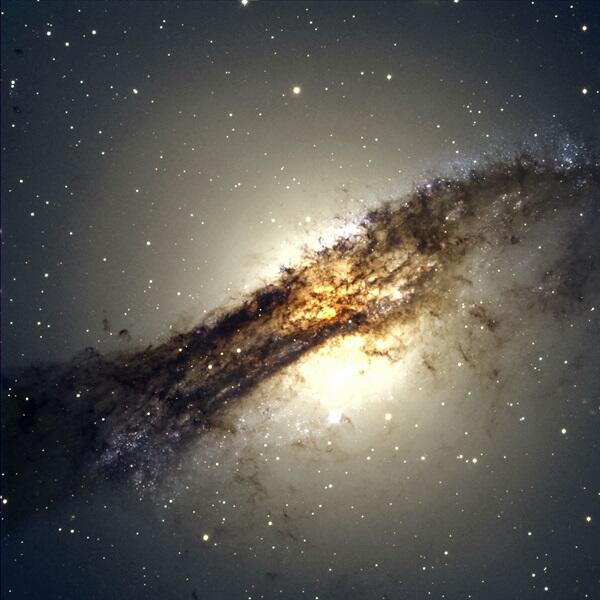The force of gravity locks smaller things in place around big ones. This holds true for galaxies, including our own, which maintain systems of satellite galaxies (for example, our Large and Small Magellanic Clouds). While the current standard cosmological model used by astronomers to describe and understand the universe states that these satellites should be randomly distributed and orbit around their parent galaxy in a disorderly fashion, new observations have just shown, for the third time, that this is not the case.
The results, published today in Science, show that the satellite galaxies surrounding Centaurus A, a well-known and relatively nearby galaxy 13 million light-years away, are orbiting not only in a single plane, but in a nice, orderly fashion as well. Such observations confirm what astronomers have already seen around our own Milky Way and the Andromeda Galaxy, but fly in the face of the standard cosmological model, which say that such systems should be rare — as in, 0.5 percent of galaxies. But at three for three, astronomers have seen it in 100 percent of systems, instead.
Of course, outliers that don’t follow the model’s predictions should exist. And three systems is still an extremely small number — but even so few observations now show that satellites are much more likely to orbit in an orderly fashion than believed. It’s looking like the standard cosmological model, which states that galaxies are largely made up of dark matter, may need some tweaks. “Coherent movement seems to be a universal phenomenon that demands new explanations,” said Oliver Müller of the University of Basel in Switzerland, and lead author of the study, in a press release.
Centaurus A is an ideal object around which to study satellite galaxies because its satellites appear arranged neatly on a plane that is perpendicular to the galaxy itself, and face-on when we see it from Earth. That means any Doppler shifting of the light received from the satellite galaxies due to their motion is from their motion around the galaxy’s center, rather than overall motion toward or away from us. Out of 16 satellite galaxies observed, 14 are rotating together around the center of the galaxy. This is consistent with the findings when astronomers observe satellites around the Milky Way and Andromeda.











